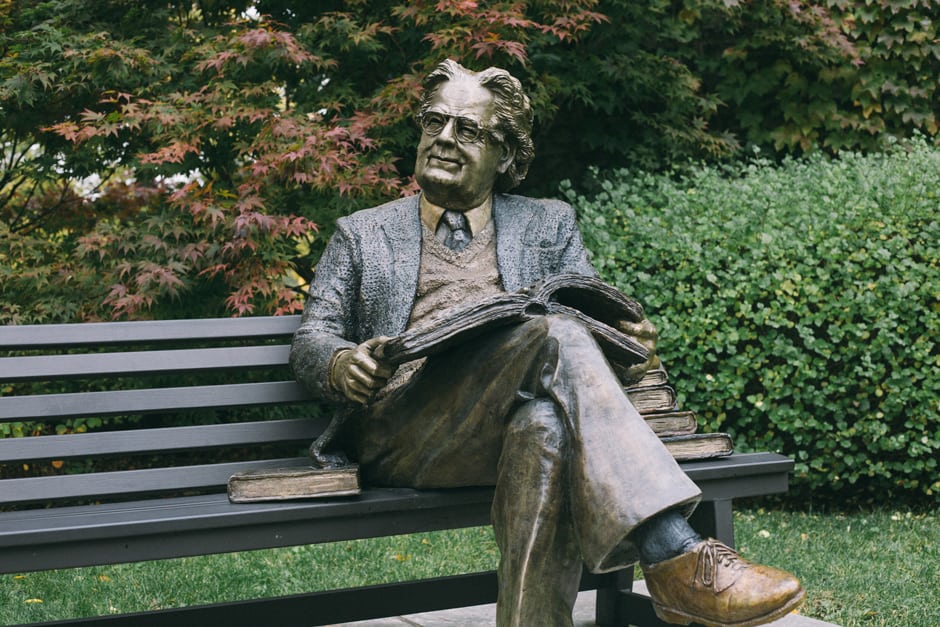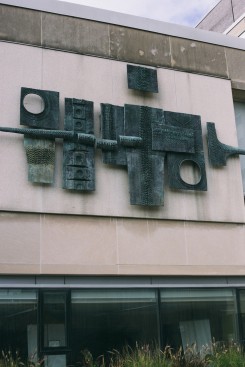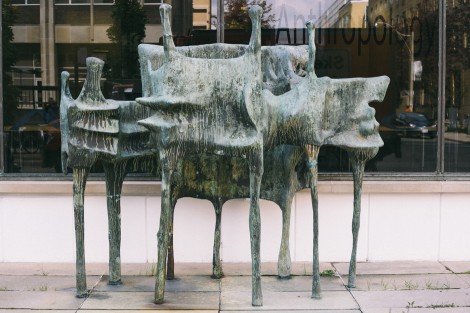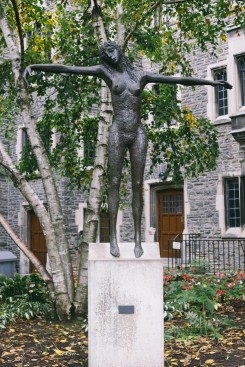Public works of art have the potential to uplift, provoke, and enrich us in unexpected ways. They’re usually permanent, and they’re usually big. But a bizarre thing happens when something is always in your face — it becomes invisible.
Whether we know it or not, when we make our way through the city, we are constantly circulating inside of an exhibition. It can be easy not to notice or care, because public artworks have a way of blending into a city’s landscape.
Take U of T. There are artworks left, right, and centre — but on our daily class-to-class rushes, it hardly seems practical to stop and look at them. How many can you count off the top of your head? Can you imagine them in your mind’s eye? Do you know what they stand for?
With the help of this guide to campus artwork, you may start to notice more of the art that can be found on our campus and have some insight into why it’s there.
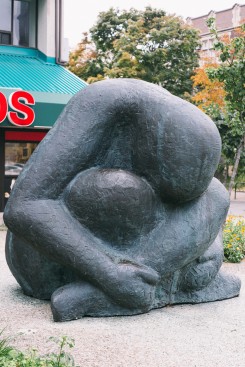 Unknown Student
Unknown Student
1970, Dale Heinzerling
Huron and Bloor, just outside of G’s Fine Foods
This hunching figure has its back turned to what used to be Rochdale College, an alternative school and co-op that was opened in the ’60s and closed down in 1975 due to drug-related problems. They say the sculpture symbolizes the hippie values and attitudes of the era, but it looks more like someone’s just upset.
Bloor Parkette Piece
1997, Susan Schelle and Mark Gomes
Bloor and Spadina intersection
This grouping of oversized dominoes doubles as a set of benches (and even as a playground).
Survivors are not Heroes
1968, Sorel Etrog
In front of Hart House
This is an abstract sculpture, so it’s okay if you don’t know what it is that’s being depicted at first glance. The piece seems pretty subversive given its title and location: it’s installed near solider’s tower, a memorial those who lost their lives in the World Wars.
Complexes of a Young Lady
1962, Sorel Etrog
Hart House courtyard
The artist appears to have picked out certain parts of the body and omitted others to produce a portrait of a girl, the way she sees herself. Maybe he’s wrong for correlating female complexes to body issues, or maybe I’m wrong for assuming that he is.
Statue of Northrop Frye
2012, Darren Byers and Fred Harrison
South-west corner of the Victoria College campus
Northrop Frye, for those who don’t know, was a pretty influential literary critic. U of T is very proud that he was a student and a professor here. You might call this an interactive sculpture: Frye is inviting you to have a seat next to him so he can read to you.
Helix of Life
1971, Ted Bieler
In front of the Medical Sciences Building
Art meets medicine — this sculpture represents strands of DNA.
1964, Walter Yarwood
On the facade of Sidney Smith Hall
This wall sculpture is an abstract rendering of seventeenth-century alchemy symbols.
Becca’s H
1973, Robert Murray
In front of the Galbraith building
Minimalism was a thing. The sculpture looks like an H and is dedicated to the artist’s daughter, Rebecca. It’s one of the few boldly-coloured artworks on campus and it totally counters the stark engineering building in the background.
Cedars
1962, Walter Yarwood
Outside the Anthropology building
The interpretation is up to you with this artwork. To me, these figures look like dysmorphic animals of some sort, but that’s probably not what the artist was going for. In fact, based on the title, it would seem he was going for trees.
Untitled
1966, Ron Baird
Outside of the Daniels Faculty of Architecture
There’s something intimidating about this sculpture. It’s like a bronze watchdog.
1976, Almuth Lutkenhaus
Victoria College
The sculpture says a thousand words. A woman takes the place of Jesus.

